Published in 2018 by The Rosen Publishing Group, Inc. 29 East 21st Street, New York, NY 10010
Copyright 2018 by The Rosen Publishing Group, Inc.
First Edition
All rights reserved. No part of this book may be reproduced in any form without permission in writing from the publisher, except by a reviewer.
Library of Congress Cataloging-in-Publication Data
Names: Baum, Margaux, author. | Payment, Simone, author.
Title: Building a career in robotics / Margaux Baum and Simone Payment. Description: New York : Rosen Publishing, 2018. | Series: Hands-on robotics | Audience: Grades 5-8. | Includes bibliographical references and index. Identifiers: LCCN 2017026811| ISBN 9781499438826 (library bound) | ISBN 9781499438802 (pbk.) | ISBN 9781499438819 (6 pack)
Subjects: LCSH: RoboticsVocational guidanceJuvenile literature. Classification: LCC TJ211.2 .B38 2018 | DDC 629.8/92023dc23 LC record available at https://lccn.loc.gov/2017026811
Manufactured in the United States of America
O nce the stuff of mere fiction or future speculation, robots have been among us for some time now, and are here to stay. The world young people will encounter in the next ten, twenty, and thirty years will probably be one where robots are not just plentiful but commonplace. Even now, robotics is a thriving technological field, and robots of one kind or another are deployed in many business sectors and areas of society.
Industrial robots have been pivotal to automobile and other heavy manufacturing efforts for decades. Ever more advanced robots utilized by surgeons, doctors, and other medical professionals for their precision in surgery and other medical support roles are coming out every year. Meanwhile, robots perform important roles in space programs, militaries, and law enforcement agencies in nations around the world.
With all the robots at work now, there will be many times more coming down the pipeline soon. Roboticists are the scientists and other specialists that help conceive of, design, and build robots and robotics system. Their jobs will be among the greatest in demand. So will the many technicians that will be necessary to manage, service, and repair a growing number of robots out there in factories, hospitals, households, and situations and environments that may be hostile to human beings, from the bottom of the sea to the outer reaches of space.
The robot revolution is infectious and has become vastly popular among young people from elementary through high school. The hobbyists of today put in long hours working on projects as part of robotics clubs, many of them going on to local, regional, national, and even international competitions, including well-known and prestigious ones like FIRST (For Inspiration and Recognition of Science and Technology) and BEST (Boosting Engineering Science and Technology), where they pit their robot creations against other students. From among their ranks will rise the next generation of roboticists, engineers, and managers.
.jpg)
If you are handy; have a knack for problem solving and troubleshooting; are interested in handling gear and equipment; enjoy building things and being part of a team, robotics clubs are one part of what could turn out to be an exciting career path. The other part includes getting a very good background early on in science, technology, engineering, and mathematics (STEM) subjects in school. In addition, art and design instruction wont hurt, either, since both can be applied to building robots. As students move through high school and college, they should expect to take even more advanced courses in computer science, mechanical engineering, industrial design, and more.
Robotics is a career that is poised to grow dramatically. Even now, schools are ramping up their robotics programs, new clubs are forming, and the potential jobs out there are multiplying. The students of today are lucky to live in an era in which so many of them can look forward to becoming the roboticists of tomorrow.
A t the forefront of the robotics field are the researchers pushing the envelope of cutting-edge technologies. They are the ones whose ideas and discoveries help create new robots and new applications for them, as well as improve on existing models and prototypes. Such researchers need great problem-solving abilities and must be creative, as they are often doing things that no one in the past has attempted.
TECH IMITATES LIFE
Some researchers work in the general field of robotics, and others specialize in a particular area. This means that robotics researchers might specialize in applying their knowledge of a specific science, such as biology, to robotics. A researcher with a specialization in biology might work on creating lifelike prosthetic limbs by finding ways to create robots that are modeled on biological designs. For instance, robotics researcher Sangbae Kim, who is a robot designer and an assistant professor of mechanical engineering at Massachusetts Institute of Technology (MIT), studied geckos, which are able to climb walls. Geckos have tiny hairs on their feet that act almost like suction cups. Kim used this idea to design an extremely effective robot that is able to climb walls, even those with perfectly smooth surfaces.
Researchers at universities in Switzerland and France studied how salamanders move, especially how salamanders four feet move independently and how they switch to a different kind of movement when leaving land and entering water. This helped the researchers figure out ways to make robots with four feet move more easily over rough surfaces and led to the development of a robot known as Salamandra Robotica. Built by the Biologically Inspired Robots Group, Salamandra Robotica has four feet and a body divided into nine segments. Each segment is powered by a separate microcontroller.
.jpg)
Some researchers radically rethink the way that robots could possibly function. For instance, robotics researcher Rodney Brooks has worked on creating robots that can figure out how to interact with their surroundings. Brooks, along with many students he has taught, is responsible for numerous advances in the field of robotics. He has built many robots, including bug-like robots and humanoid robots, and is one of the leading researchers in the field of artificial intelligence (AI). Brooks has built small, simple, inexpensive robots based on insects that could navigate their environment. He also worked on developing a robot called Cog, which could interact with human beings, and oversaw the development of Kismet, a robot that has the ability not only to interact with people but to read and display facial expressions.








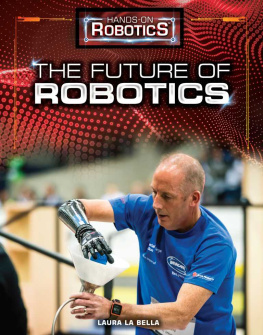
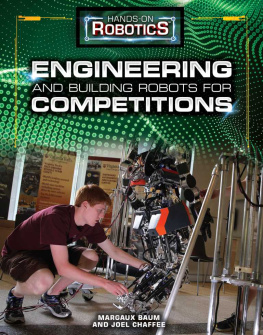




.jpg)

.jpg)